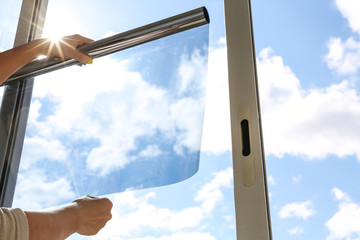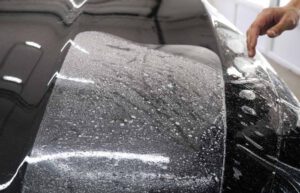Window Tinting Littleton has evolved into an art that blends science, style, and protection. What was once a simple way to darken glass has now transformed into a multi-layered innovation redefining how we experience light. Each thin film now carries invisible technology designed to interact with sunlight, privacy, and even digital signals. The story of window tinting today is about progress wrapped in clarity and comfort.
In modern times, tinting is not just about shade but also precision. Advanced films are engineered to balance visible light while rejecting harmful radiation. The delicate layering process involves microscopic particles that shift light at the atomic level. This innovation allows homes, vehicles, and buildings to maintain brightness while reducing glare. The artistry lies in maintaining transparency without sacrificing performance.
People now see tinting as a form of environmental consciousness. Films are developed to lower energy consumption by controlling indoor temperatures. By filtering heat, they reduce dependence on artificial cooling systems. The result is a space that remains cool, efficient, and comfortable throughout the day. Every installation contributes silently to sustainability.
Window tinting also represents a silent guardian against invisible threats. Modern films filter ultraviolet radiation that can fade materials and harm skin. The layers act as a transparent armor, blocking over ninety percent of UV rays. This ensures that interiors stay vibrant and safe without any compromise on natural light. The film’s protection goes beyond aesthetics—it safeguards longevity.
Another innovation lies in smart tinting technology. Recent breakthroughs allow films to respond dynamically to changing light conditions. These tints can adjust opacity automatically depending on brightness levels. This real-time adaptability turns ordinary glass into intelligent barriers. The experience is seamless and futuristic, as if the windows are alive and aware.
Aesthetics, too, have evolved beyond simple shading. Modern tint films now come with subtle hues that interact beautifully with architecture. Some change color slightly depending on the angle of sunlight, creating a living mosaic of reflections. This integration between light and design gives structures a refined personality. Tinting is no longer a background detail—it’s part of visual storytelling.
Privacy has always been a core function of tinting, but it has become more nuanced. Instead of complete darkness, films now use optical balancing to allow vision from one side while obscuring it from another. This creates comfortable seclusion without isolation. People can enjoy openness while still feeling protected. The sophistication lies in the invisible engineering behind every panel.
The installation process itself has become an exact science. Expert installers use laser measurements to ensure perfect alignment and adhesion. The films are layered with care to avoid bubbles or distortions. Precision determines both beauty and durability. When done properly, the film becomes indistinguishable from the glass itself.
In architectural spaces, tinting has turned windows into tools for climate control. By adjusting visible light transmission, entire buildings can regulate heat and illumination naturally. Some projects now integrate tinting with ventilation and lighting systems. The synergy between these technologies creates living environments that adapt to human needs. It’s a quiet revolution in sustainable design.
For vehicles, window tinting provides both comfort and character. Drivers appreciate how it reduces eye strain and enhances focus. The controlled light levels keep interiors cooler, while the sleek finish adds subtle sophistication. In some designs, films even help strengthen glass against shattering. Function and beauty merge into one seamless layer.
The psychological effects of tinted spaces are also drawing new attention. Studies show that balanced light enhances mood and productivity. Tinting that maintains a natural spectrum can reduce fatigue and stress. This is why designers now consider tint tone and transparency in emotional design. A comfortable visual environment can truly reshape daily experience.
Technologists are experimenting with nanotechnology to make films even thinner yet stronger. These nanofilms can contain self-healing polymers that repair small scratches automatically. When exposed to sunlight or warmth, they regenerate themselves. This advancement promises longevity without maintenance. The window becomes a living surface that cares for itself.
Environmental innovators are also exploring biodegradable tint materials. These eco-friendly films decompose safely at the end of their lifespan. Such developments align tinting with circular economy goals. Instead of producing waste, the industry is beginning to design for regeneration. This is the new green frontier of transparency.
Energy generation through tinting is another exciting frontier. Researchers have developed films capable of converting light into electricity. These solar-integrated tints could transform every window into a miniature power source. Imagine a building where each pane contributes to its own energy supply. This fusion of sustainability and aesthetics could reshape urban landscapes.
Comfort is being redefined through heat-reactive materials. Some tints are designed to shift density depending on temperature. When it gets too warm, they darken slightly to reflect more sunlight. As the temperature cools, they return to a lighter tone. This natural rhythm between glass and climate creates effortless equilibrium.
Digital privacy has added a new layer of relevance to tinting. Some films are now engineered to block certain frequencies, shielding screens and devices from outside detection. It’s a modern defense in an age of data sensitivity. These films keep visual privacy intact while maintaining connectivity. The fusion of security and light control redefines the boundaries of glass.
In the world of design, window tinting has also entered the realm of customization. Artists and engineers collaborate to create patterns that only appear under certain lighting conditions. These optical illusions give each space a unique personality. What looks plain during the day can become a masterpiece at night. Tinting has truly become a medium of expression.
Soundproofing is another hidden advantage that’s often overlooked. Some multi-layered tints can dampen external noise slightly. While not a full acoustic solution, the difference is noticeable in busy environments. It adds another dimension of comfort that enhances peace within enclosed spaces. The film’s benefits extend beyond what the eye can see.
There is also a growing conversation about mental well-being in relation to light control. Exposure to harsh brightness or glare can trigger discomfort and anxiety. Tinting moderates this visual overstimulation, providing a gentler atmosphere. It supports relaxation, focus, and emotional balance. A well-lit yet softened environment invites calmness and creativity.
Durability has improved tremendously with advanced coatings. Scratch resistance, anti-fog layers, and moisture barriers are now standard features. These ensure the tint maintains clarity even under challenging conditions. Modern films can last years without fading or peeling. They preserve the original elegance of glass with minimal care.
Cultural significance is also beginning to emerge around window tinting. In some communities, tinted windows symbolize privacy, prestige, and modernity. The act of tinting becomes a personal statement of identity and taste. As people redefine their relationship with space, tinted glass reflects that evolution. It represents individuality framed in transparency.
Economic accessibility has improved as production techniques advanced. What used to be a luxury is now an affordable enhancement. Consumers can choose from a range of qualities that fit various budgets. This democratization of comfort and design has expanded the reach of tinting technology. More people can now experience the benefits once reserved for high-end users.
Future research continues to explore adaptive intelligence in tinting systems. Integrations with smart home devices allow users to control tint levels via sensors or voice commands. The windows can automatically react to weather forecasts or indoor activities. This integration blurs the line between architecture and artificial intelligence. Glass becomes an interface between the human and digital world.
The visual character of cities is also changing because of tinting. The reflective glow of buildings creates mesmerizing skylines that shift with the sun. Each reflection adds to an evolving canvas of light and shadow. The urban environment becomes dynamic, alive with mirrored tones and gradients. Window tinting shapes the aesthetic rhythm of modern architecture.
Maintenance has become simpler with advanced coatings that repel dust and water. Self-cleaning films minimize the need for constant upkeep. This makes tinting practical even for hard-to-reach surfaces. Over time, the investment pays off not just in comfort but in convenience. Clean transparency remains effortless year-round.
The artistry of tinting continues to expand into unconventional spaces. Designers now apply films to glass partitions, skylights, and even furniture surfaces. These creative uses redefine boundaries between interior and exterior. Every surface that interacts with light becomes an opportunity for innovation. Tinting’s versatility has turned transparency into a creative playground.
Ethical production is also becoming part of the conversation. Responsible sourcing of materials and safe labor practices are now priorities in film manufacturing. This shift ensures that innovation grows alongside integrity. The tint industry reflects a broader cultural demand for mindful production. It’s no longer just what’s on the glass, but what stands behind it.
The symbolism of window tinting reaches deeper than appearance. It speaks about control over light, heat, and visibility. It’s a metaphor for balance—between openness and protection, brightness and shade. Through it, people express how they want to interact with their environment. Tinting becomes a physical manifestation of boundaries and comfort.
Looking ahead, experts predict tinting will merge further with biotechnology. Films might one day filter air or release purified oxygen through micro layers. Others might adjust light according to human circadian rhythms, promoting better sleep and alertness. The idea of living glass is no longer science fiction. It’s the natural next step in a world seeking harmony between innovation and life.
Ultimately, window tinting reflects how humanity learns to coexist with light. It’s not about blocking it but understanding and reshaping it. Each layer, each film, represents centuries of evolution in how we see and protect ourselves. In every shimmering pane lies the silent brilliance of technology and imagination. The art of tinting turns ordinary glass into extraordinary experience.



